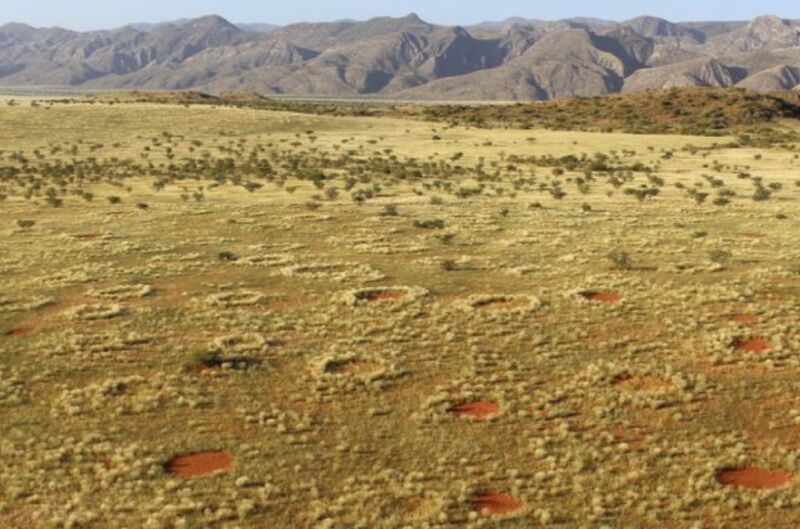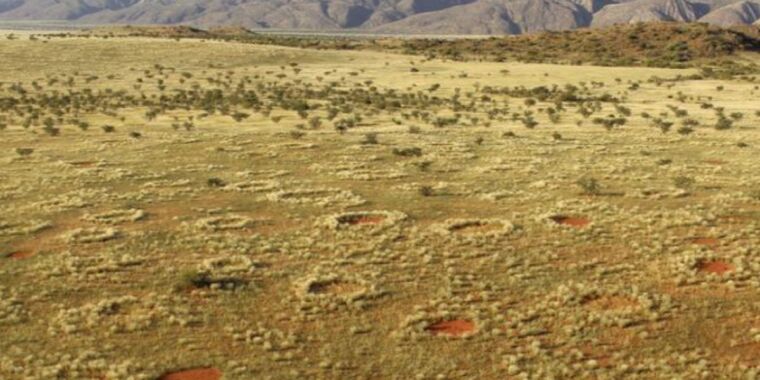
UHH/MIN/Juergens
Himba bushmen in the Namibian grasslands have long passed down legends about the region’s mysterious fairy circles: bare, reddish-hued circular patches that are also found in northwestern Australia. In the last 10 years, scientists have heatedly debated whether these unusual patterns are due to sand termites or to an ecological version of a self-organizing Turing mechanism. Last year, a team of scientists reported what they deemed definitive evidence of the latter, thus ruling out sand termites, but their declaration of victory may have been premature. A recent paper published in the journal Perspectives in Plant Ecology, Evolution, and Systematics offers a careful rebuttal of those 2022 findings, concluding that sand termites may be to blame after all.
As we’ve reported previously, the fairy circles can be as large as several feet in diameter. Dubbed “footprints of the gods,” it’s often said they are the work of the Himba deity Mukuru, or an underground dragon whose poisonous breath kills anything growing inside those circles. Scientists have their own ideas.
One theory—espoused by study co-author Norbert Jürgens, a biologist at the University of Hamburg in Germany—attributed the phenomenon to a particular species of termite (Psammmotermes allocerus), whose burrowing damages plant roots, resulting in extra rainwater seeping into the sandy soil before the plants can suck it up—giving the termites a handy water trap as a resource. As a result, the plants die back in a circle from the site of an insect nest. The circles expand in diameter during droughts because the termites must venture farther out for food.
The other hypothesis—espoused by Stephan Getzin of the University of Göttingen—holds that the circles are a kind of self-organized spatial growth pattern, specifically a Turing pattern, that arise as plants compete for scarce water and soil nutrients. In his seminal 1952 paper, Alan Turing was attempting to understand how natural, non-random patterns emerge (like a zebra’s stripes), and he focused on chemicals known as morphogens. He devised a mechanism involving the interaction between an activator chemical and an inhibitor chemical that diffuse throughout a system, much like gas atoms will do in an enclosed box. It’s akin to injecting a drop of black ink into a beaker of water. Normally this would stabilize a system: the water would gradually turn a uniform gray. But if the inhibitor diffuses faster than the activator, the process is destabilized. That mechanism will produce a Turing pattern: spots, stripes, or, when applied to an ecological system, clusters of ant nests or fairy circles.
Getzin and colleagues published two papers in 2019 and a third in 2022 about their findings in support of the Turing pattern hypothesis, with Getzin telling Ars at the time, “We can definitively dismiss the termite hypothesis” about both Australian and Namibian fairy circles. He based that statement on the fact that his team could find no evidence of termite-damaged roots; rather, it was plant water stress that caused grasses to die inside the bare patch of fairy circles, based on their topsoil moisture measurements at a depth of 20 centimeters beneath the fairy circles. The grass plants self-organize unevenly and hence draw water unevenly to their roots and through diffusion in the sandy soils. The result is circular patches of dead grass.

